Rose care and growing guide – expert tips for beautiful blooms every summer
Discover how to grow roses successfully to ensure your shrubs put on a beautiful show of fragrant flowers


Roses are classic and hugely-popular shrubs that are loved for their color, scent and versatility. There are roses suitable for any style of garden, but it can be daunting to choose between the thousands of different roses that exist.
If you are on the lookout for rose garden ideas then there are patio, shrub, standard, climbing, rambling, and more types out there to pick from. It is all about considering the type, space, color, and scent when choosing which roses to grow and care for.
We take a closer look at how and why to pick a rose for your garden, how to grow roses, and also the key annual maintenance tasks required to ensure your roses are healthy and bloom as abundantly as possible year-after-year.
Which roses to grow?

Rose gardens have been popular throughout history
There is a multitude of roses to choose from, roses are a very broad group of plants with over 150 species and thousands of cultivars around the world. If you are looking for roses to add to your backyard, or are designing a rose garden itself, then it can be mind-boggling given the vast potential of roses to choose from.
They come in many sizes and forms and are available in a huge array of shades and petal textures. There is also a range of scents, though lots of modern hybrid varieties do not offer the same scent as old-fashioned roses. Though, through new breeding, many roses can now be easier to care for than ever. Many repeat-flowering types can provide color and fragrance all the way from early summer through into late fall.
Mark Lane, garden designer, author and TV presenter, says: ‘If you’re looking for a shrubby plant, a patio plant, or something to be used as groundcover or to climb to cover trellis or an archway or need to disguise an ugly wall or garage with something that will ramble and scramble away, then roses tick all the boxes.
‘In addition, you get fresh green leaves, stunning shade of flowers from white to the deepest purple and in a lot of cases a scent that can be sweet and subtle to one that’s musky and honey-like.’
If you are browsing the catalogs or scrolling online looking for ideas for the best fragrant roses or best climbing roses, then it can be easy to feel overwhelmed by the options. There are key factors to consider when picking roses, including the space available, where you’ll be planting the rose and, of course, the color and scent.
Mark Lane adds: ‘To choose the right rose, first think about the space in which it’s going. If you only want to add something alongside other shrubs, that won’t take up much space vertically and horizontally then opt for shrub or patio roses. If you need something to climb, then go for climbers or ramblers. Also, think about the colors already in that area and select a rose that will either complement or contrast.’
Shop at a reliable rose provider: we like to buy roses from Burpee.
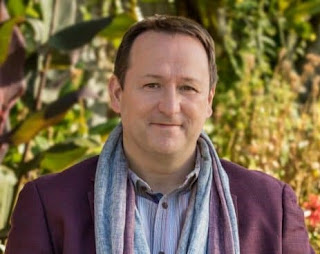
Mark Lane is a multi-award-winning landscape designer with over 20 years of experience. He is also a regular TV and radio broadcaster and a published garden writer, as well as being the gardening expert for stairlift and homelift company Stannah.
How to grow roses
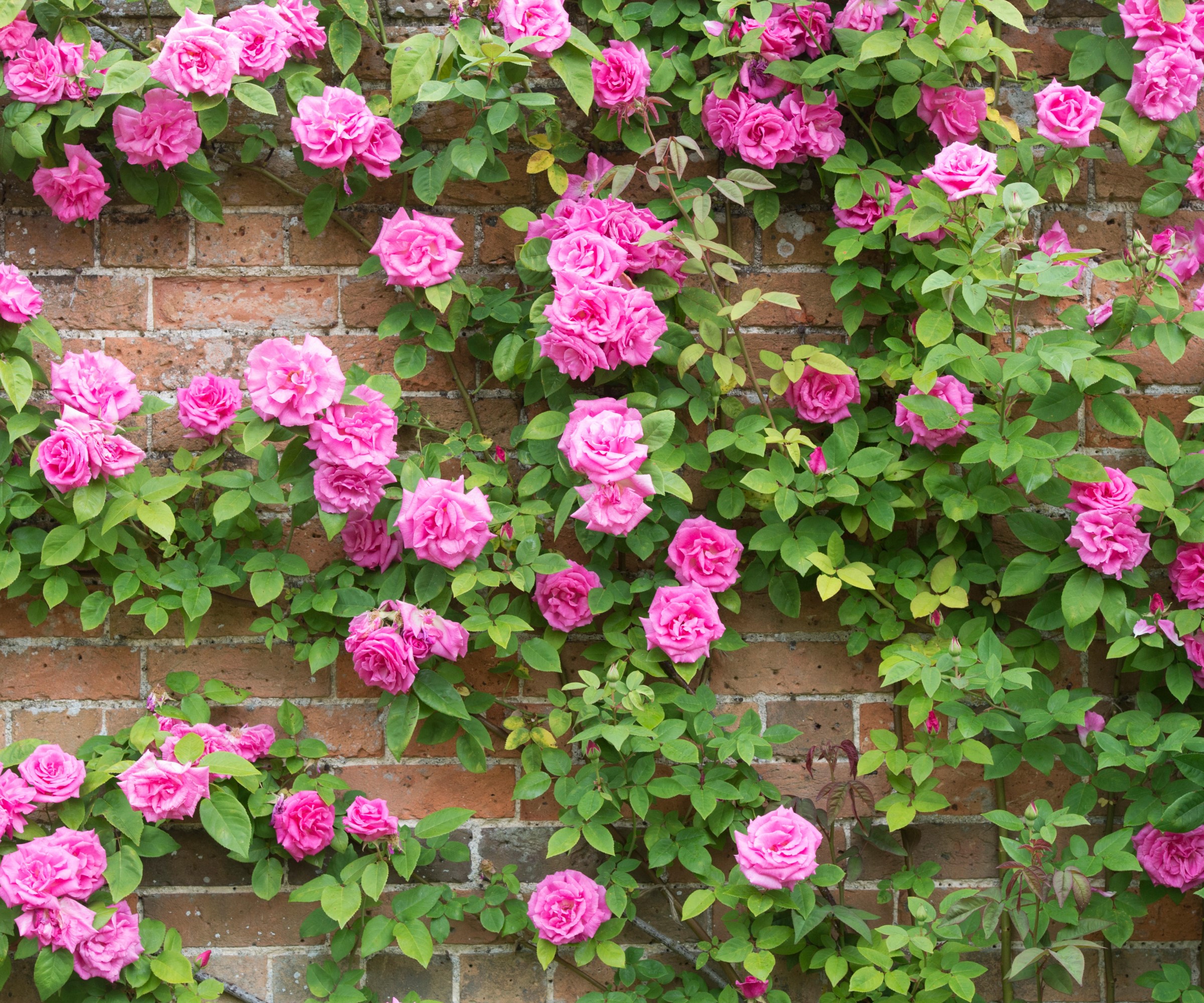
Climbing roses can cover walls, fences, or structures
Planting seasons
Roses often come as either bare root or container-grown specimens and that can dictate when you plant roses. Bare root roses are the cheaper option to purchase and they are planted during the dormant months between November and March, while container-grown roses can be planted at any time of year.
Picking the right location
The most important factors to consider when growing roses is to get the location correct in terms of sunlight and competition. Planting in the wrong location, which can include shady areas and exposed or windy sites, is a common rose growing mistake to avoid.
Rosebie Morton, founder of The Real Flower Company, advises that the amount of sunlight available is an important factor to consider when picking a site to grow your roses, and the varieties that you intend to plant.
She says: ‘Roses thrive in a sunny position, so try and pick an area which receives at least four hours of sunlight a day. You should also allow for their roots to spread, so try not to plant roses too close to a tree, hedge or other large plant.
‘If you are very limited when it comes to sunlight, there are some varieties which can tolerate shade spots better than others – consider Blush Noisette, Iceberg (see below for our favorite find), Alfred Carrière or Zéphirine Drouhin.’
Plant correctly
When it comes to planting roses correctly, make a large hole that can accommodate the roots and consider mixing some compost or well-rotted manure into the planting site to boost nutrients for the rose. Place the rose in the hole and ensure the graft is buried just below the soil line, before filling in the hole and firming the soil to ensure there are no air pockets.
You can grow roses in pots as part of container garden ideas if you are short of space. Miniature or patio roses are best suited to being grown in pots.
Rosa 'Iceberg' | Available at Nature Hills
One of the world's best white roses, 'Iceberg' is a classic, elegant and easy-care shrub rose that delivers non-stop white flowers. It is heat-tolerant throughout USDA zones 5 through 9 and is a smaller shrub, growing to 3-4 feet in height and width.
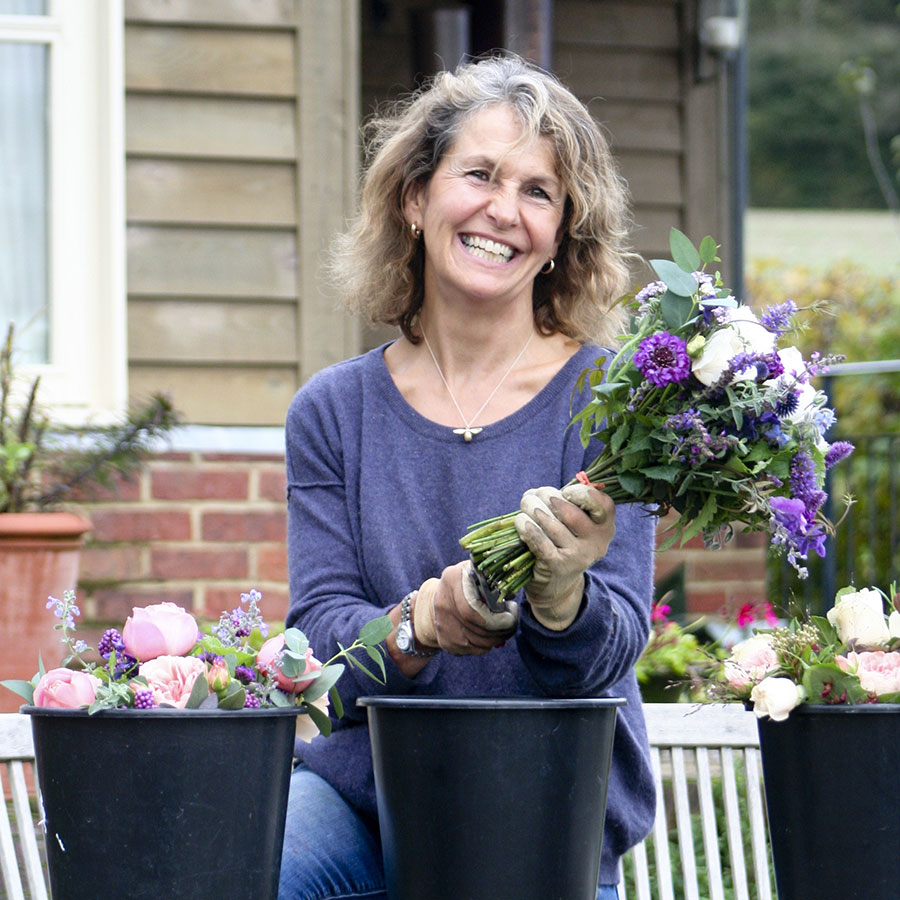
Rosebie Morton is the founder of The Real Flower Company. She first started growing garden roses in the walled garden at her family farm in 1995. The Real Flower Company was founded in 1999 and specializes in English grown scented roses and flowers.
How to grow roses from cuttings
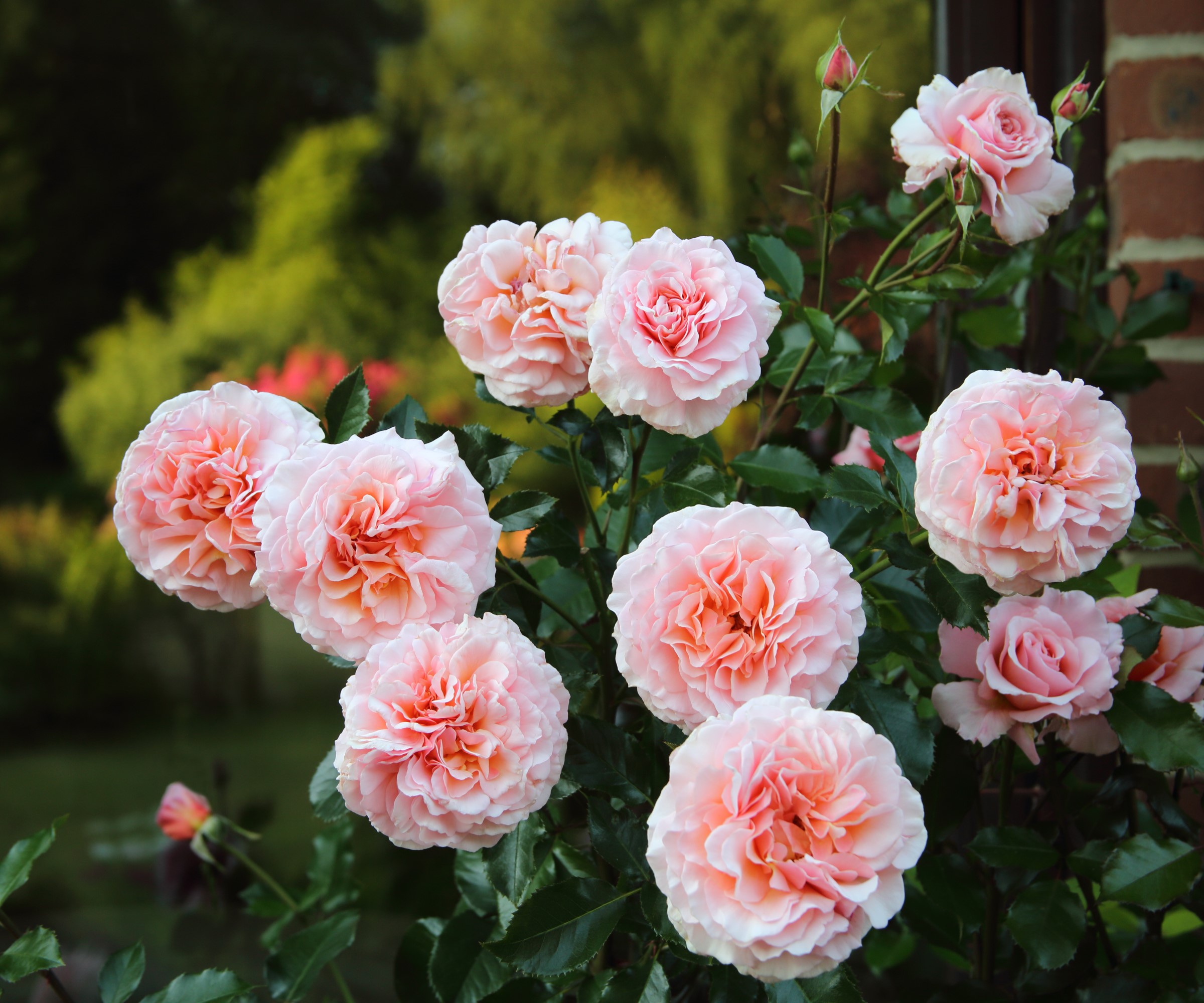
Roses thrive growing in a sunny spot in the garden
Once you have roses in your garden, then you can get more plants from your favorites by knowing how to take rose cuttings. This can be done by taking hardwood cuttings during fall and winter, or softwood cuttings in late spring and early summer.
Rose cuttings should be taken with clean garden tools and either placed into an outdoor bed for hardwood cuttings, or into pots for softwood ones. Cuttings can either be rooted in water or you can try the social media trend of growing rose cuttings in potatoes.
How to care for roses

'Much of the work which goes into keeping roses healthy should have been done by spring,' says National Trust garden researcher and author of National Trust School of Gardening (at Amazon), Rebecca Bevan. 'That would include pruning to stop them getting congested. Also, mulching to feed the soil, trap in moisture and bury fungal spores.'
However there are still some jobs to be done throughout the year:
Deadheading roses
'While traditional rambling roses tend to flower once, in great profusion, modern, repeat-flowering roses begin more slowly, but send up new blooms throughout the summer,' says Rebecca.
Knowing how to deadhead roses that are repeat-flowerers, such as climbers and hybrid tea roses, encourages more blooms.
Pruning roses
Knowing how to prune roses and when to prune them is a crucial part of maintaining the health of your roses.
Be sure to prune them before they come into leaf to prevent damaging buds and shoots, ideally in October or November but you can get away with as late as February depending on the weather and the US hardiness zone where you live.
Watering roses
Watering is important until the rose is established and then these deep-rooted plants can survive on the natural moisture in the soil. If you do need to plan when to water plants like roses, do so in the morning and aim for their roots, not the leaves.
As well as watering, knowing when to fertilize roses is great for helping make sure your roses grow strong and put out a wealth of blooms. Rosebie Morton, founder of The Real Flower Company, hails the benefits that mulching with compost or well-rotted manure can bring to supply roses with nutrients and also help to ensure moisture is retained in the soil for longer.
Mulching and feeding
‘Mulching to the base of your rose plant will also provide some protection, help retain moisture and supply valuable nutrients to help your roses thrive,’ she adds.
‘Before mulching, add a handful of slow release fertilizer round the base of the plant avoiding the woody stems. Apply a generous couple of inches of mulch in a circle – try and match the spread of the plant when it is in full bloom. The best time of year to do this is in spring – late March or early April – and again in fall; late September or early October.’
Correct watering and fertilizing of roses can help to fight against many rose diseases and a lack of moisture or nutrients can be a common reason why rose leaves turn yellow. An example of a good slow release fertilizer to use with roses is the Schultz Rose & Flower Slow Release Plant Food, available at Amazon.
Landscaping with roses offers so many benefits and the truth is that roses are not as hard to grow and maintain as many people think. They do require pruning and feeding, as outlined above, and there are some diseases and rose pests to contend with. Though with good care, and using rose companion plants to deter pesky insects that want to trouble your shrubs, roses can be highly rewarding, with the blooms and scent more than worth any work involved.
Sign up to the Homes & Gardens newsletter
Design expertise in your inbox – from inspiring decorating ideas and beautiful celebrity homes to practical gardening advice and shopping round-ups.

Drew’s passion for gardening started with growing vegetables and salad in raised beds in a small urban terrace garden. He has worked as a professional gardener in historic gardens and specialises in growing vegetables, fruit, herbs, and cut flowers as a kitchen gardener. That passion for growing extends to being an allotmenteer, garden blogger, and producing how-to gardening guides for websites. Drew was shortlisted for the New Talent of the Year award at the 2023 Garden Media Guild Awards.
-
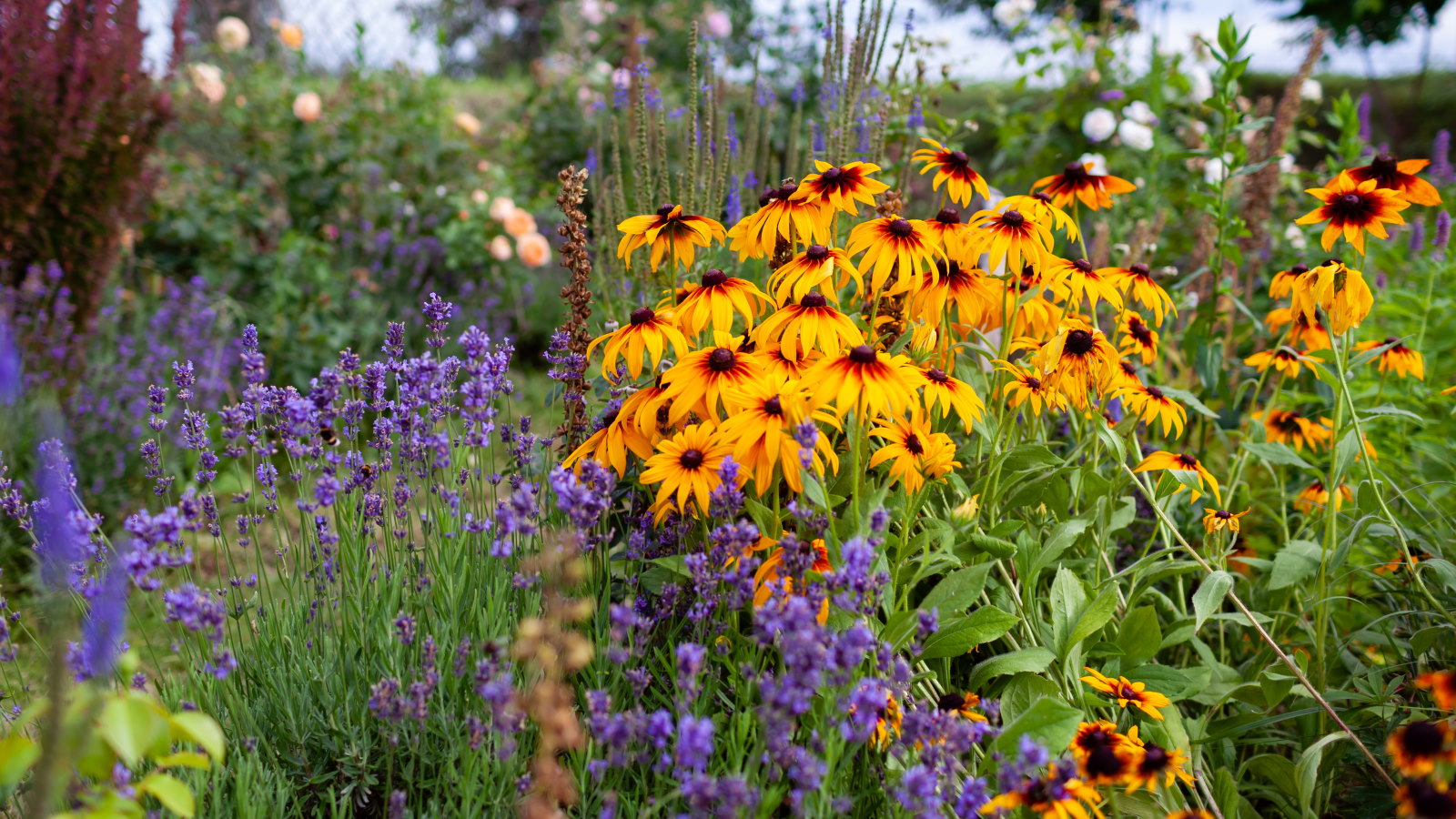 Garden experts warn against overcrowding flower beds – why this on-trend look is the worst thing you can do
Garden experts warn against overcrowding flower beds – why this on-trend look is the worst thing you can doIt's tempting to create an abundant, overflowing garden bed, but it can limit your plants in more ways than one
By Tenielle Jordison Published
-
 Grace Kelly's former living room set the blueprint for quiet luxury – you can explore her NYC penthouse (listed for $3.25 million)
Grace Kelly's former living room set the blueprint for quiet luxury – you can explore her NYC penthouse (listed for $3.25 million)A unit in the storied Manhattan House, where Grace Kelly, Benny Goodman, and Shirley Jackson have lived, has hit the market – it's a masterclass in neutrals
By Hannah Ziegler Published
